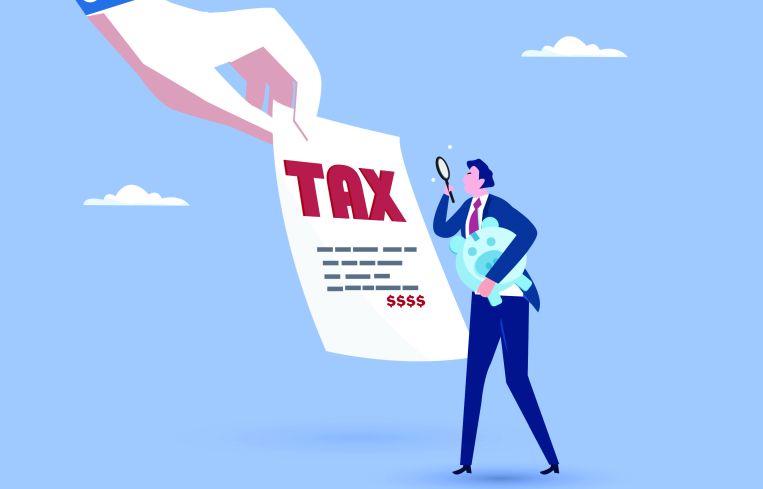What New York’s Mayoral Contenders Intend to Do About Taxes
Income tax hikes come up a lot, but property taxes not so much
By Aaron Short September 5, 2025 4:59 pm
reprints
The most salient issue for New York City voters this year has not involved reducing violent crime or the right way to oppose President Trump’s agenda, but taxes and affordability.
Zohran Mamdani won the June Democratic mayoral primary over more seasoned candidates because he framed his campaign around solving the city’s cost-of-living crisis by expanding its essential services, in an echo of Bill de Blasio’s successful 2013 campaign.
One of the few levers that a mayor can pull to fund his agenda while also redistributing wealth is revamping the city’s tax code.
“There’s a sense among many people that income inequality has worsened over the past decade and those at the top disproportionately benefited and don’t pay their fair share,” Ken Fisher, a member of Cozen O’Connor’s business law department, said.
Mayors do not have the power to change the city’s income, corporate or property tax rates on their own. Instead, they can use their bully pulpit to ask state legislators and the governor to adjust the state budget.
That hasn’t stopped New York’s mayoral candidates — including the Democratic assemblyman as well as former Gov. Andrew Cuomo and Mayor Eric Adams, who are running as independents — from offering a wide swath of plans that range from income tax hikes on city millionaires to eliminating taxes on tips for service industry employees and abolishing income taxes altogether for certain working families.
To varying degrees, the candidates have also expressed interest in overhauling the city’s property tax system, which has contributed to escalating rents for tenants and disproportionately high tax bills for outer-borough single-family homeowners.
“Tax policy is the nexus to all these issues, and Andrew Cuomo has proposed a multifaceted and achievable plan to help the New Yorkers who need it the most and build the housing needed to increase supply and lower costs all around,” Cuomo campaign spokesman Rich Azzopardi said.
But the mere thought of higher income taxes — one of Mamdani’s top priorities — has the city’s wealthiest residents shell-shocked.
Some business leaders have pinned their hopes on Cuomo or Adams to topple Mamdani, while both candidates have called on the other to drop out of the race. Other CEOs have threatened to relocate their businesses out of the city.
It’s not an idle notion. The city’s share of the nation’s millionaires fell from 6.5 percent to 4.2 percent from 2010 to 2022 while the share of affluent individuals living in Florida, California and Texas rose significantly, according to a Citizens Budget Commission report.
If the city had retained the same share of millionaires from 2010, it could have collected $2.5 billion more in tax revenues, the CBC estimated. But if the city’s services continue to be too expensive or poorly managed, more New Yorkers could leave anyway.
“Residents of the city are dissatisfied with its quality of services, the quality of life, affordability and safety,” said Ana Champeny, vice president for research at the Citizens Budget Commission. “It’s not about spending more, it’s about spending better and improving these services.”
The most contentious debate this cycle has been over income taxes.
Mamdani has vowed to hike income taxes by 2 percent for anyone making over $1 million and elevate corporate taxes from 7.25 percent to 11.5 percent for businesses earning more than $5 million. His goal is to raise $10 billion in revenue annually to fund an array of new programs, including child care, free bus service and city-run markets.
Cuomo proposed eliminating income taxes for families earning at or below 200 percent of the federal poverty level and not charging taxes on tips that service industry workers earnings. Adams for his part wants to reduce income taxes for families earning below 150 percent of the federal poverty level, affecting some 429,000 New Yorkers, while lowering taxes for another 152,000. Republican nominee Curtis Sliwa, meanwhile, hopes to slash income and corporate taxes.
Mamdani’s move, which has garnered the most attention, appeared unlikely earlier this year.
New York Gov. Kathy Hochul pushed for a $1 billion income tax cut in January arguing that New Yorkers were overburdened. She then specifically criticized Mamdani’s tax plan by saying it would drive millionaires to Palm Beach. But last spring both legislative chambers’ budget proposals included measures to boost income taxes for the state’s top two brackets by 0.5 percent and hoist the corporate rate up to 9 percent.
Looming federal cuts may also force the governor’s hand. The congressional spending plan that passed this summer would result in $13.5 billion in health care spending that the state would need to make up or risk having millions of New Yorkers go uninsured. Hochul appeared to consider new revenue sources to address the spending gap in an interview with New York magazine this month.
But tinkering with income taxes is a tricky balance. The city remains dependent on its millionaires, who make up 1 percent of its taxpayers but contribute close to 40 percent of its personal income tax revenues. A cap on a deduction that allowed taxpayers to lower their federally taxable income by the amount they paid in state and local taxes had some residents considering the benefits of low-tax states. (Congress temporarily raised the so-called SALT cap to $40,000 per year.)
“Individuals who pay very high income taxes and have financial advisers and tax accountants who have a sense of what the relative cost of staying in New York is from a tax point of view are making choices whether that is an acceptable cost,” Champeny said. “We’re concerned about the outmigration of New Yorkers, and we should be thinking about why people want to live somewhere else.”
Another tool mayors can use to lower the cost of living is changing how the city assesses property values.
Over the past two decades, the city’s property tax system has grown increasingly inequitable for tenants and homeowners in lower-income neighborhoods. The current system taxes multifamily and commercial buildings at a higher effective rate than single-family homes, and properties below $300,000 face higher tax rates than those worth more than $1 million.
Mayors have wide latitude to overhaul the property tax system, due to a 2017 lawsuit filed by Tax Equity Now New York (TENNY) that led the state Court of Appeals to acknowledge the city has the power to change assessment ratios. But mayors have been reluctant to make any adjustments for fear of angering their constituents who have faced rising taxes regardless of the value of their homes.
That could change next year. Mamdani, Cuomo and Sliwa have acknowledged the unfairness of the city’s current property tax system and pledged to ease the burden on renters and some homeowners.
Cuomo wants to extend a 2 percent cap on one- to four-family homes, which have previously been exempt from a state cap, and raise the mansion tax threshold from $1 million to $2.5 million.
Sliwa proposed lessening the tax burden on apartment buildings and creating a more consistent assessment system without penalizing property owners with higher rates.
Mamdani meanwhile pledged to lower class assessment percentages while adjusting rates upward, which would have the effect of reducing tax payments in some neighborhoods while raising them in wealthier ones. He would also add circuit breakers to prevent longtime homeowners in gentrifying neighborhoods from being priced out, and rescind a rule where the city compares high-priced co-ops and condos with rent-regulated apartments in its assessments, which has led to a higher tax burden for rental properties. (Mamdani’s campaign did not respond to requests for comment.)
Martha Stark, a former city finance commissioner and policy director of TENNY, said Mamdani should be transparent about any changes to the city’s tax revenues, property tax rates and assessments he is proposing to win approval from the public.
“Property tax isn’t an income tax, it’s a tax on the value of one’s home and the government is telling you what the value is,” she said. “It’s incumbent that you do that in a way that’s fair, accurate and transparent.”
Housing advocates want mayoral candidates not to forget about adjusting assessments for multifamily owners, which often pass their property tax increases down to tenants in forms of higher rents each year.
“Older rent-stabilized buildings are some of the most overtaxed buildings in the city,” said Kenny Burgos, CEO of the New York Apartment Association, which represents many landlords of rent-stabilized properties. “This is a broken system, and it is one of the biggest reasons why rents are high in New York City.”



